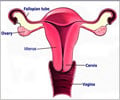Some 150 years after the publication of Darwin's famous book, 'On the Origin of Species', debate still continues on the mechanisms of speciation.
Some 150 years after the publication of Darwin's famous book, 'On the Origin of Species', debate still continues on the mechanisms of speciation.
New research finds sexual selection to greatly enlarge the scope for adaptive speciation by triggering a positive feedback between mate choice and ecological diversification that can eventually eliminate gene flow between species.By means of a mathematical model, former Postdoctoral Fellow at the Santa Fe Institute and current Postdoctoral Fellow at the Institute of Ecology and Evolution at the University of Bern in Switzerland, Sander van Doorn and fellow colleagues demonstrate that disruptive ecological selection favors the evolution of sexual preferences for ornaments that signal local adaptation. Such preferences induce assortative mating with respect to ecological characters and enhance the strength of disruptive selection. The model predicts that species can split into specialized ecotypes without the divergence of mating preferences, avoiding problems that have plagued previous theoretical studies of speciation by sexual selection. This research study examining the origin of species through ecological specialization and the simultaneous evolution of mating preferences for locally adapted mates will be published in the November 26, 2009 issue of Science.
Findings suggest natural and sexual selection can work in concert to achieve local adaptation and reproductive isolation, even in the presence of substantial gene flow. Future research involves the development of models to examine interactions between ecology and mate choice that could help to explain how diversity arises and how reproductive isolation between species evolves. The ideas presented in the paper may soon be tested in the field in crossbill birds, sticklebacks and other species where biologists are currently investigating whether the attractiveness of mates does indeed reflect adaptation to the local environment.
Source-Eurekalert
RAS










